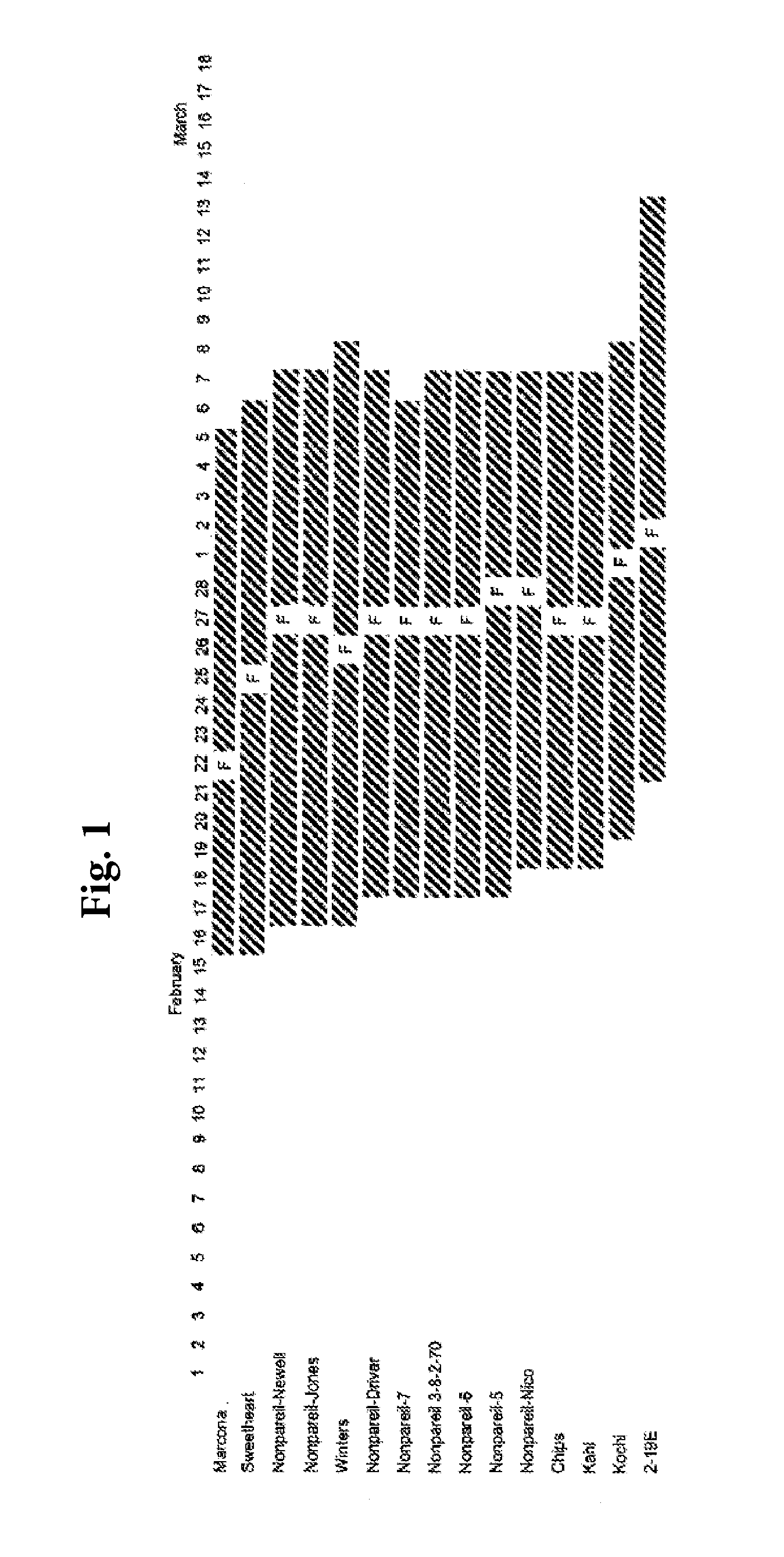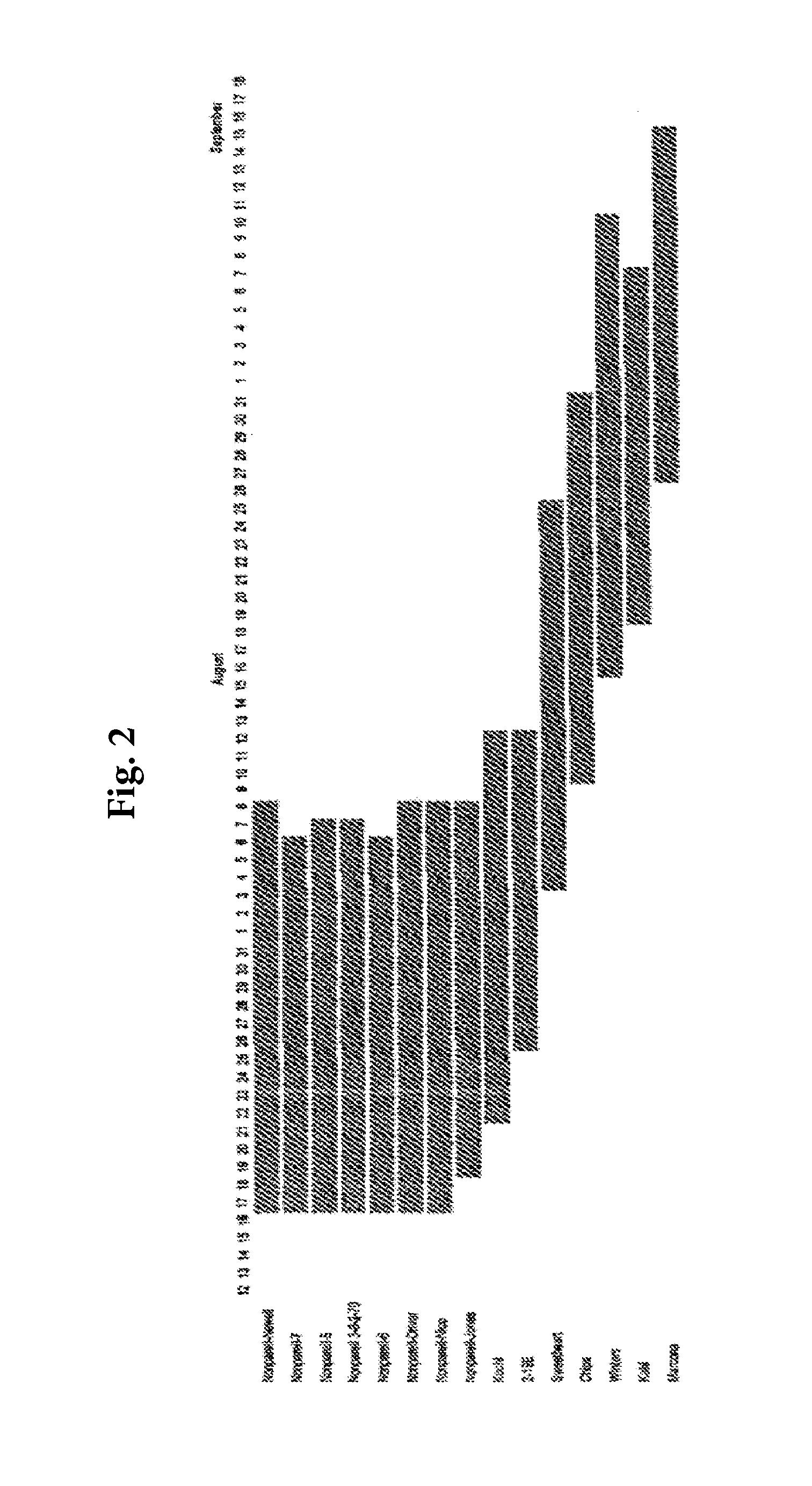Almond tree named ‘Kester’
a technology of almond tree and kester, which is applied in the field of almond tree breeding programs, can solve the problems of a dramatic decrease in the new planting of this cultivar, and achieve the effect of low potential for non-infectious and high yield of ‘nonpareil
- Summary
- Abstract
- Description
- Claims
- Application Information
AI Technical Summary
Benefits of technology
Problems solved by technology
Method used
Image
Examples
Embodiment Construction
[0013]The original almond seedling population from which almond variety ‘Kester’ was selected was produced by routine crosses made during or prior to Year 1 between ‘Tardy-Nonpareil’, a late blooming mutation of ‘Nonpareil’, as the seed (female) parent and ‘Arbuckle’ as the pollen (male) parent. The crosses were made as part of the Calif. Expt. Stat. Proj. 739-Almond Breeding Project.
[0014]‘Kester’, which was evaluated under the individual seedling designation number ‘2-19E’, was selected in Year 11 based on its desirable kernel and bloom qualities and was propagated in replicated trials in Field 7 near Winters, Calif. for further evaluation under Project POM-5884-H: Genetic Improvement of Peach and Almond. Based on its promising characteristics, selection ‘2-19E’ was submitted in Year 14 for inclusion into the Foundation Block where it was designated by the Accession Number 03-059-01-91. In Year 15, selection ‘2-19E’ was included in the Regional Variety Trials and grown under semi-...
PUM
 Login to View More
Login to View More Abstract
Description
Claims
Application Information
 Login to View More
Login to View More - R&D
- Intellectual Property
- Life Sciences
- Materials
- Tech Scout
- Unparalleled Data Quality
- Higher Quality Content
- 60% Fewer Hallucinations
Browse by: Latest US Patents, China's latest patents, Technical Efficacy Thesaurus, Application Domain, Technology Topic, Popular Technical Reports.
© 2025 PatSnap. All rights reserved.Legal|Privacy policy|Modern Slavery Act Transparency Statement|Sitemap|About US| Contact US: help@patsnap.com



